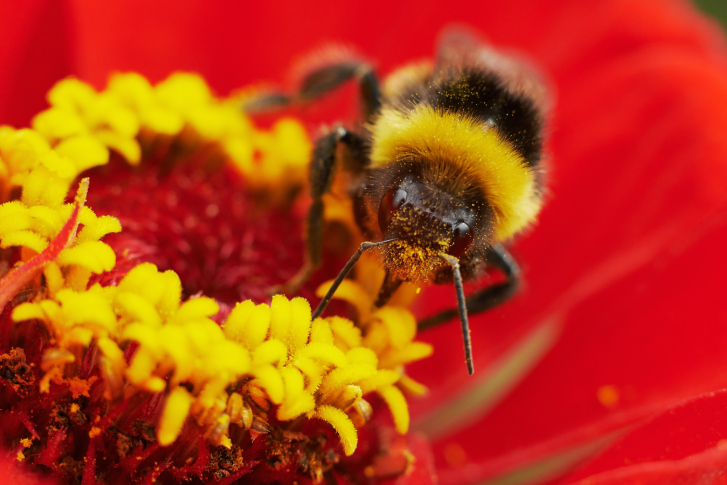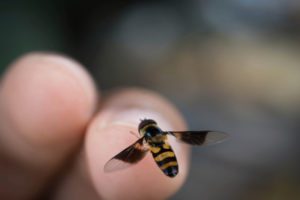You probably already know from experience that bees can be a nuisance when you’re trying to enjoy a meal outside. The smell of food attracts them like crazy, and before you know it, they’re crawling around near your plate.
Annoying, isn’t it?

But there are several things you may not know about bumble bees that could give you a whole new perspective on the tiny buzzing creatures. By the time you’re done reading this blog post, you may not feel quite as negative toward bumble bees anymore – even if they do disrupt your picnics!
11 Things You Might Not Know About Bumble Bees
1. Bumble bees aren’t just black and yellow.
They can also be orange with white stripes. So if you’re trying to identify a bumble bee, look for those colors and a fuzzy appearance. You’ll also want to listen for the distinctive buzzing sound they make when flying.
2. The world’s largest bumble bee lives in South America.
These bees, called Bombus Dahlbomi, look furry, and they’re so big that they are sometimes likened to “flying mice.” While this may be a big of an exaggeration since the queen bee is only 40mm long, they’re still much larger than most other types of bumble bees.
Fortunately, you don’t have to worry about seeing these bees in Maryland (or anywhere else in the United States) because they live in South American temperate forests.
3. Bumble bees have a fast metabolism.
In fact, their metabolism is so fast that they’re always only about 40 minutes from starving – even on a full stomach! That’s why they have to eat so much.
4. It’s unlikely that you’ll be stung by a bumble bee.

That’s because male bumble bees don’t have a stinger, and the bumble bees that do have one aren’t aggressive. Unless you threaten a bumble bee or its nesting site directly, it’ll likely keep to itself and avoid causing you any bodily harm.
So, if you happen to see a bumble bee nearby, don’t panic. Just stand still for a moment and then slowly move away from the bee. Once the bee realizes that you aren’t a flower, it should fly away from you.
If you do get stung by a bumble bee and the stinger is left in your skin, you should quickly use a fingernail or the edge of a credit card to scrape out the bee sting from your skin. Don’t try to grab the sting – doing so could result in more venom being squeezed into your skin.
Once the stinger has been removed from your skin, you can use a cold compress or take a painkiller to ease the pain and minimize swelling.
Tip: Don’t touch a bumble bee that is lying on its back. Since that’s often a defensive position, you may be stung if you bother it.
5. Some people have allergic reactions to bee stings.
About 1% of the general population experiences an allergic reaction when stung by a bumble bee. Some of these reactions are minor and cause itching and redness. Other reactions are more severe and can cause heart palpitations and fainting.
If you have a sever reaction to a bee sting, you should call an ambulance immediately.
6. Bumble bees don’t die when they sting.
Unlike honey bees, bumble bees don’t die after they sting. In fact, since their stinger has no barb, they can sting you several times in a row if you aren’t careful!
Fortunately, as mentioned earlier, it’s unlikely that a bumble bee will sting you unless you threaten the bee or its nest. Stay out of their way, and you’ll be safe.
7. Bumble bees use their wings to cool down their nests.
Since bumble bees can flap their wings 200 times per second, they are able to use their wings as fans to reduce the heat inside their nests. This technique is called fanning.
8. Bumble bees don’t have arteries or veins.
Instead, all of their organs sit in a pool of blood inside their body. However, their heart does pulse blood through a long tube, which serves as a sort of circulatory system for the bumble bee.
9. Bumble bees have 5 eyes.

10. Bumble bees are picky about the flowers they collect nectar from.
When it comes to flowers, bumble bees have two favorite colors – blue and violet. They’ll often fly to a flower that’s either of those colors over one that’s any other color.
Their preference isn’t due to how the flower looks, though. It’s due to the fact that the violet and blue flowers are often the most nectar-rich (and therefore, the most beneficial to them).
11. The number of bumble bees is declining, and that’s a problem.
In North America, many species of bumble bees are in decline. The Franklin’s Bumblebee is even listed as critically endangered, and two species of bumble bees in the UK have gone extinct since the beginning of the 21st Century.
Now, you may be wondering:
Why is this a problem? Wouldn’t the world be a better place for humans without bumble bees around?
Not quite. That’s because almost 75% of our crops need pollinators to survive, and a lot of that pollination is carried out by – you guessed it – bees. To see just how much bee extinction would impact your food options, check out this article that shows what a grocery store in a bee-free world might look like.
Because of this, we suggest that you leave bumble bee colonies near your home alone. If you want to reduce the chance of bumblebees nesting in your yard, remove all debris and keep the yard clean.
If you’re facing a serious bumble bee problem and the nest must be removed, contact Brody Brothers Pest Control. We’ll help you take care of your residential or commercial bumble bee problem for good.

